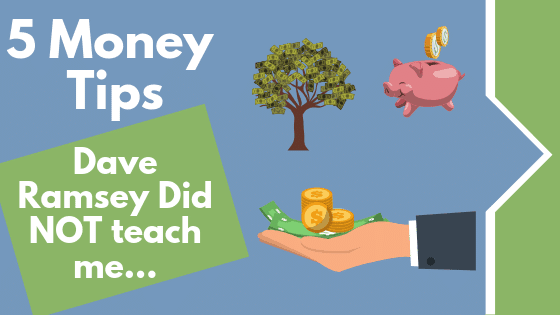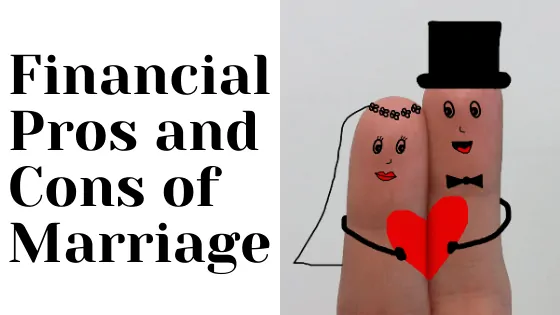If you are even begining about thinking about personal finance you probably have stumbled upon Dave Ramsey…
In some personal finance circles he has a cult like following…
I don’t mean that to sound negative because it isnt. He has built up a tribe of loyal followers that will follow and defend his process.
Before Michelle and I got married we took a Dave Ramsey course and it was life changing…
You see, I am a natural saver. I budget.
Michelle… well… she is not a “spender” per say but she doesnt exactly like spread sheets either…
I tell people to this day that Dave Ramsey’s course didnt necessarily get Michelle and I on the same page financially but it did at least put us in the same book.
Who exactly is Dave Ramsey?
Dave Ramsey is an outspoken financial guru… When I say outspoken… I really mean it. He can sometimes come off as brash or harsh, but in reality his advice is spot on.
He talks about everything from budgeting, to creating extra income, to destroying debt on his podcast. If you are not a fan of his podcast check out his book Total Money Makeover.
What does Dave Ramsey teach?
Dave has developed a pretty strict set of procedures and rarely does it he diverge from them. He calls these his baby steps and truly they work for the majority of people.
Here is the thing, he has developed a very simple to understand set of steps that work if you follow them.
Step 1: Create a $1,000 emergency fund
Life happens… He gets it… you get it… When you are trying to dig yourself out of debt the last thing you need is more debt. His advice is build this safety net first. This allows life to happen and you to have an answer.
How can you create your emergency fund?
Create a side hustle
Budget
Sell things
Step 2: Pay off all debts except your mortgage
This is where the majority of people live for a while. Baby step 2 involves knocking off almost all of your debts. For us the the majority of our debt was in student loans… ugh.
This step is the longest and hardest because in some cases you feel like you are not making any momentum. You throw every penny, nickel, dollar towards your debt until its gone.
He prefers the debt snowball method because he believes paying off debt is mostly mental. This allows you to see and feel like things are being paid off.
Step 3: Save 3-6 months worth of expenses
I like to think of this as my escape fund… Once Michelle and I paid off our debt we began working on this step. For most people setting aside this is for times a of a major crisis or if you lose your job.
Having this step complete allowed me the freedom to walk away from my job and try my hand at online business. If we would have had student loan debt or credit card debt, it would have been a struggle to make this leap.
Step 4: Invest 15% of your income to retirement
Now that you have a nice emergency set up, it’s time to plan for the future. Take 15% of your income and invest, invest, invest…
Step 5: Save for your kids college
We have two boys… college is expensive…
Unlike what Michelle and I faced after college, we would like to help the boys start a career and life without having a huge burden of student loans.
Step 6: Pay off your home early
If you own your home, this is your last debt that you own… Now is the time to tackle this with gazelle like energy… Just like you did in step 2 you are going to tackle this debt head on.
Step 7: Build wealth and give
Honestly he recommends to give throughout the process… and we would agree.
Like I mentioned, if you follow all of these steps you will have financial freedom…
But….
I don’t like to be a rule follower….
5 Money Tips that Dave Ramsey DIDNT teach me…

Credit Cards are NOT evil…
If you happen to sign up for one of Dave’s classes you may stumble upon a jar full of cut up credit cards…
He is not a fan…
And I get it…
If you are in heaps and heaps of debt and can’t control your spending, giving someone a credit card is akin to giving drugs to an addict.
It may be a bit of a harsh picture but the reality is that there is a problem.
So I understand why he takes this stance.
Remember he is trying to reach the masses with a simple and easy to follow formula.
The truth of the matter is that you can leverage credit cards if you are smart.
Michelle and I spent two weeks this summer visiting Boston, Cape Cod, and Martha’s Vineyard… We rented a car and stayed at upscale hotels… Did I mention we flew with two boys?!?
Our total cost???
744 dollars… which was mostly food on the trip.
We leveraged our current spending and sign up bonuses to Credit Card reward hack…
We didnt spend more than we were going to normally. We just leveraged the credit and payed it off as soon as we got home.
Cash is not always king
About 10 months ago we knew we needed a new vehicle. It was time.
I spent the next 3 months researching the best vehicle for what I wanted to spend and then spent the next 2 months hunting for the deal…
We had the money in the bank…
I finally found the car.
It was exactly what we wanted and it fit the price I wanted to pay.
I walked in and said I wanted to test drive this particular vehicle.
It drove perfect.
We get back to the desk thinking I am going to negotiate and was pretty excited…
He says “Here at ABC Car Store we are not paid a commission. I get paid the same amount each week. The price on the cars is the price you pay. We are no haggle because we feel the customer should know what they are paying for”
Now I could respect this… but I still wanted to negotiate.
Okay I say… but what if I pay you cash???
“We will accept it…”
No, I mean. What discount will you give me?
“Like I said. This is our best price and if you search you will realize that our prices are better than anyone within 100 miles…”
He was right. I knew this. I had searched before I got there…
Here is the thing… Cash may be king for a lot of things… but sometimes if its the best deal, it doesnt matter if you have cash. They are not changing their price.
Debt aversion
The entire premise that Dave teaches is on the idea to eliminate debt as fast you possibly can. The process goes something like this…
Save a little… pay off a lot of debt… save a bit more… pay off mortgage… save a lot more and give.
The plan is simple.
It really is.
If a simple plan is what you are looking for, then follow it.
The reality is that life is a bit more complex than that.
There are opportunity costs and you need to weigh your options carefully.
The idea that debt is bad and needs to be avoided is faulty thinking.
For instance, we currently have a mortgage. We have a fixed 2.85 interest rate…
2.85!!!
If I took his advice I would be pouring money to pay that off as quick as possible.
The reality is, that I could MAKE a whole lot more money investing the “extra” payments in nearly anything. Then add the idea of inflation. The bank is basically giving me a free loan for the next 10 years.
I will take that every day of the week!
8% withdrawal rates…
He over generalizes a lot!
I mean ALOT!
But again his message is not supposed to be personal, it’s supposed to be general.
If you follow these general rules, you will get out of debt.
One of the statements he talks about is 12% returns and being able to withdrawal 8% at retirement…
The problem is that when you use overly optimistic numbers like 12% returns… you are apt to believe your retirement is going to grow faster than it truly is…
Is 12% returns possible…
Yeah… anything is possible.
But when you are planning for your future and you believe that for every 100 dollars you set aside for retirement you are going to get $12 more you may vastly over estimate how much your retirement fund will be.
Then add on the fact that he mentions an 8% withdrawal rate…
Eeeeekkks.
Let’s be a bit more cautiously optimistic and set the returns at 6%- 8% and a withdrawal rate at 4%…
When you do that math, you get a whole new number that you need to set aside every month to reach your retirement goal.
If I am wrong, your retirement account will grow faster and you can retire earlier than plan… WIN!
If Dave is wrong, you retired too soon and you need to find another source of income… Boo!
Debt Snowball
For someone who has calculators galore on his website and in his book, he gets this one wrong. I understand what he is doing. He wants people to feel the momentum of eliminating bills and cutting up cards.
But the reality of the situation is that it’s costing the person more money each month.
The debt snowball is again pretty straight forward…
You rank your debts. You tackle the lowest amount and move to the next using the extra money to pay off the next one.
Over time, the general amount you paying each month stays about the same but you are just allocating it to different accounts…
The problem?!?
Interest rates are not created equal.
If I have a 100 dollar loan at 8% and a $2500 credit card at 22% interest thats a big deal.
While it may feel good to get rid of that $100 loan… the reality is that credit card interest is HUGE!
We recommend using an avalanche method to paying off loans and debts.
It allows you to pay off the loans in order of the interest to lower the amount of interest you are paying each month.
When you run the calculations side by side, avalanche wins.
Michelle and I will be forever grateful for taking Dave’s course before we got married. It truly allowed us to begin to have open conversations about money and finances. His advice is great and simple to follow but by no means is it perfect…
What is your best money tip???
Share in the comments below.







